This post may contain affiliate links. Please read our disclosure policy.
It’s so easy to make silky smooth Slow Cooker Yogurt at home with just two ingredients and prep time of only 5 minutes! This simple recipe saves money, reduces waste, and delivers fresh yogurt without any additives or preservatives.
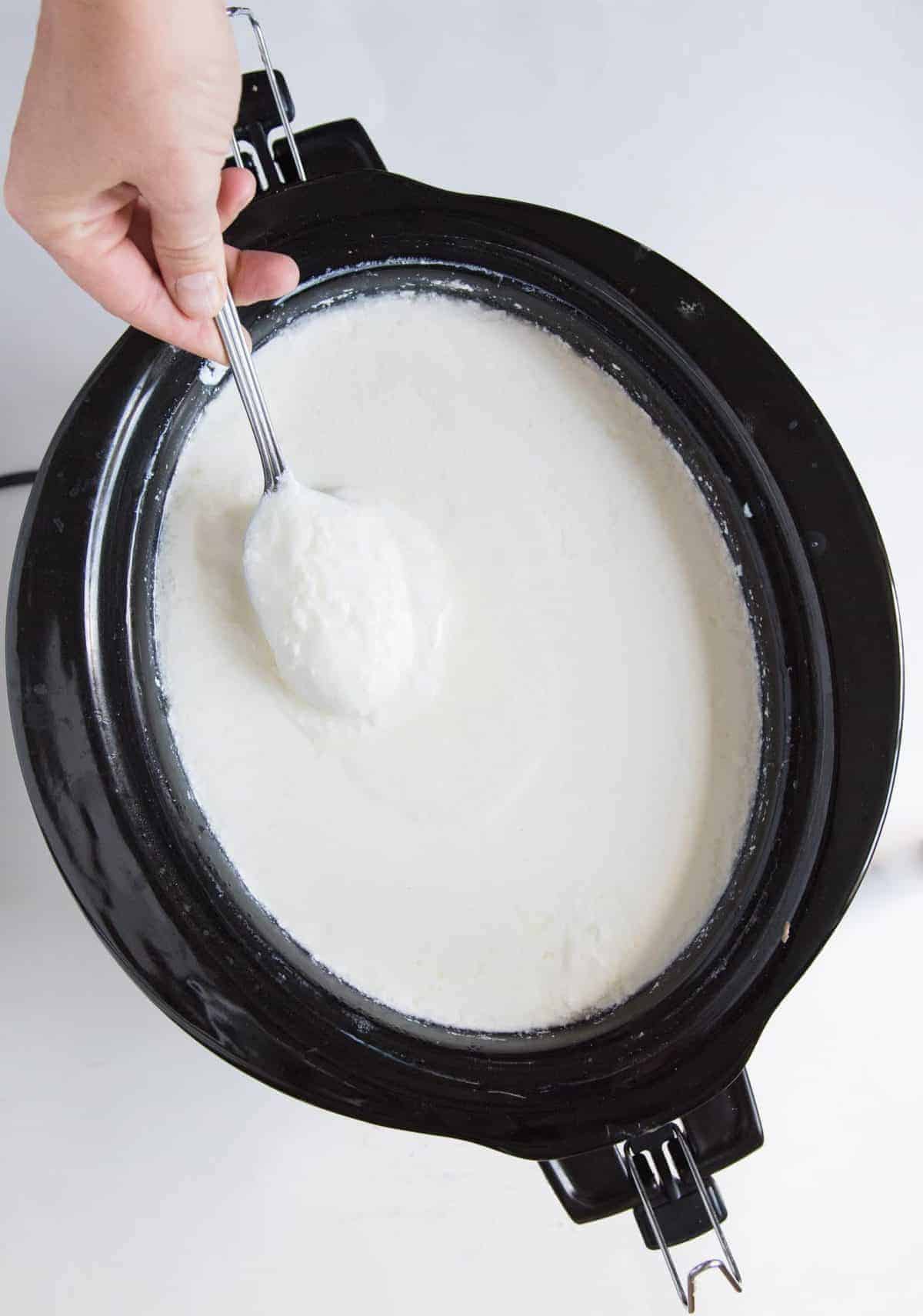
🥛Just 5 minutes of prep, and then slow cooker does the rest while you sleep. Such an easy way to get another option for homemade breakfast or snacks into your meal rotation!
My 2 Best Tips For Making Slow Cooker Yogurt
- Temperature Matters: The first time you make this recipe, use a thermometer to verify your slow cooker’s heating pattern. The ideal temperature for yogurt cultures is 110-115°F (43-46°C). Too hot and you’ll kill the cultures; too cool and they won’t activate properly.
- Quality Starters Make Quality Yogurt: Choose a high-quality plain yogurt with live active cultures for your beginning starter. Brands like Mountain High, Fage, or Chobani work well. Then you can start saving your own starter from each of your homemade batches. After a few batches, you may notice your yogurt becoming less thick—this is the time to introduce a fresh commercial starter.
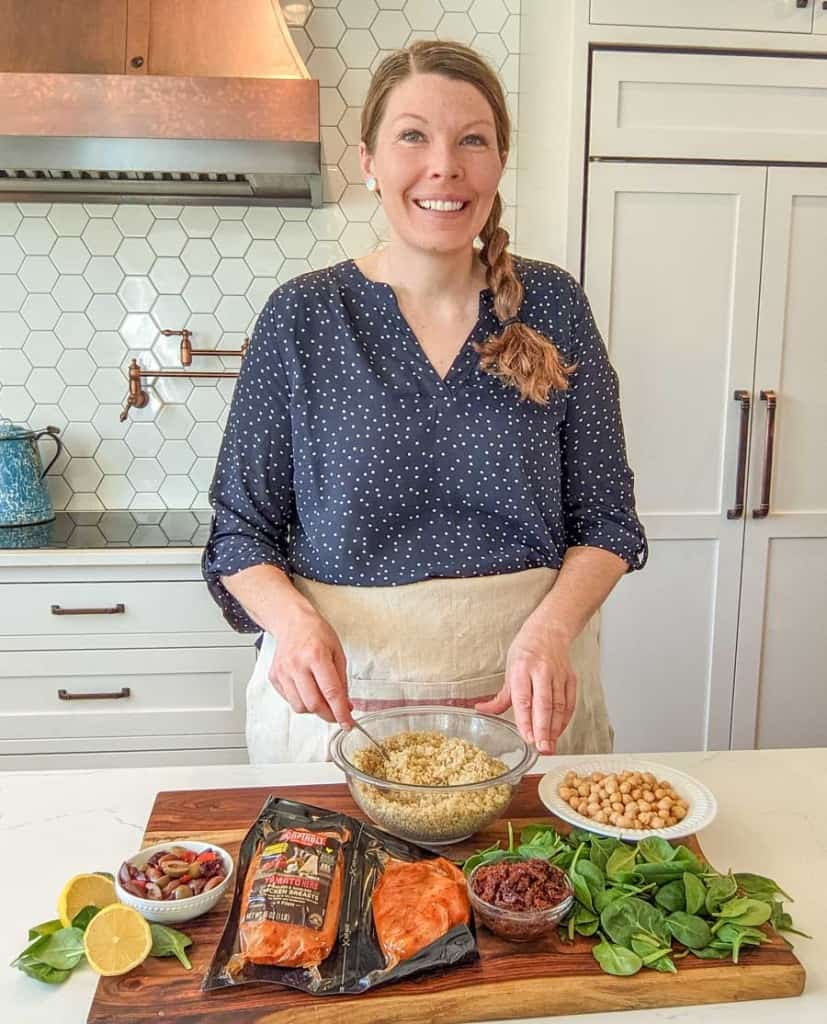
🩷 Melissa
I like to start this in the afternoon so that it’s ready to sit for its long 8-12 hour warm resting period overnight. We then wake up to fresh yogurt, and I’ll serve it with fresh fruit and some homemade granola.
This is a great way to to get organic yogurt on the cheap. You can buy a carton of organic milk and turn it into yogurt for about half the price of organic yogurt.
It is plain yogurt, but you can add honey, jams, fresh fruit, and just about anything else you like. I also use it in place of sour cream in most recipes.
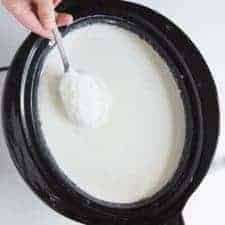
Slow Cooker Yogurt
Video
Ingredients
- 1/2 gallon (8 cups) whole milk (you'll get a thinner product with a lower fat content milk)
- 1/2 cup commercial plain yogurt that says “Live and Active Cultures” on the tub, I have great success with Mountain High yogurt for my culture.
Instructions
- In a large crock pot, add the milk. Add the lid. Turn it on low for around 2 ½ hours.
- After that time has passed, unplug the crock pot and let it sit for 3 hours. I always set a timer for these or I don’t remember.
- After the 3 hours has passed, stir in the ½ cup of yogurt. Replace the lid of the crock pot and cover with two big towels or a blanket. Let rest for 8 to 12 hours (overnight works well). In the morning you'll have yogurt!

- Place it in a half-gallon mason jar and refrigerate for a few hours before serving. It will thicken up in the fridge. Keep a ½ cup of this yogurt for your next batch and say goodbye to buying yogurt!
- You can also let the yogurt strain in cheese cloth in the fridge for a few hours and you'll get a thicker Greek yogurt.

Notes
- I highly recommend getting a little instant-read thermometer to make homemade yogurt since it’s all about the temperature.
- The goal is to scald the milk which takes place around 180°F. Check it with a thermometer the first time to see if the “warm” setting is warm enough or if maybe an hour and 45 minutes would work on low. Once you figure it out, I don’t think you would have to use the thermometer every time.
- After the milk is scalded, the waiting time is meant to bring the milk down to around 110-115°F so it’s still warm but won’t kill your yogurt culture.
- Serve with fresh fruit and granola
- Make yogurt bowls: 5 Easy Healthy Yogurt Bowl Ideas
- Homemade Fruit on the Bottom Yogurt Cups
- 4 Ingredient Healthy Strawberry Frozen Yogurt (5 minute recipe!)
- It also goes great in smoothies like my Key Lime Pie Smoothie, Strawberry Kiwi Smoothie, or Avocado Smoothie.
- Or try it in these amazing Soft and Puffy Greek Yogurt Sugar Cookies!
Nutrition
Recipe FAQs
Homemade yogurt typically stays fresh in the refrigerator for 1-2 weeks when stored in an airtight container. The flavor may become more tart over time as the cultures continue to slowly develop.
Several factors can affect thickness: using ultra-pasteurized milk, milk with lower fat content, culture that wasn’t active enough, or temperature issues during incubation. For thicker yogurt, try using whole milk, ensuring proper temperatures are maintained, or strain the finished yogurt through cheesecloth.
After your yogurt is made, simply line a fine-mesh strainer with cheesecloth, place it over a bowl, and pour in your finished yogurt. Allow it to drain in the refrigerator for 2-4 hours for a thicker Greek-style yogurt. The longer it strains, the thicker it becomes.
More Healthy Snack Recipes to Consider
Smoothies
25+ Best Smoothie Recipes
Dip Recipes
Lemon Garlic Hummus Recipe Without Tahini
Healthy Snacks
Medjool Date Protein Bites: No-Bake Sweet Treat
Did you make this recipe? Leave a ⭐️ review and share it on Instagram, Facebook, or Pinterest!

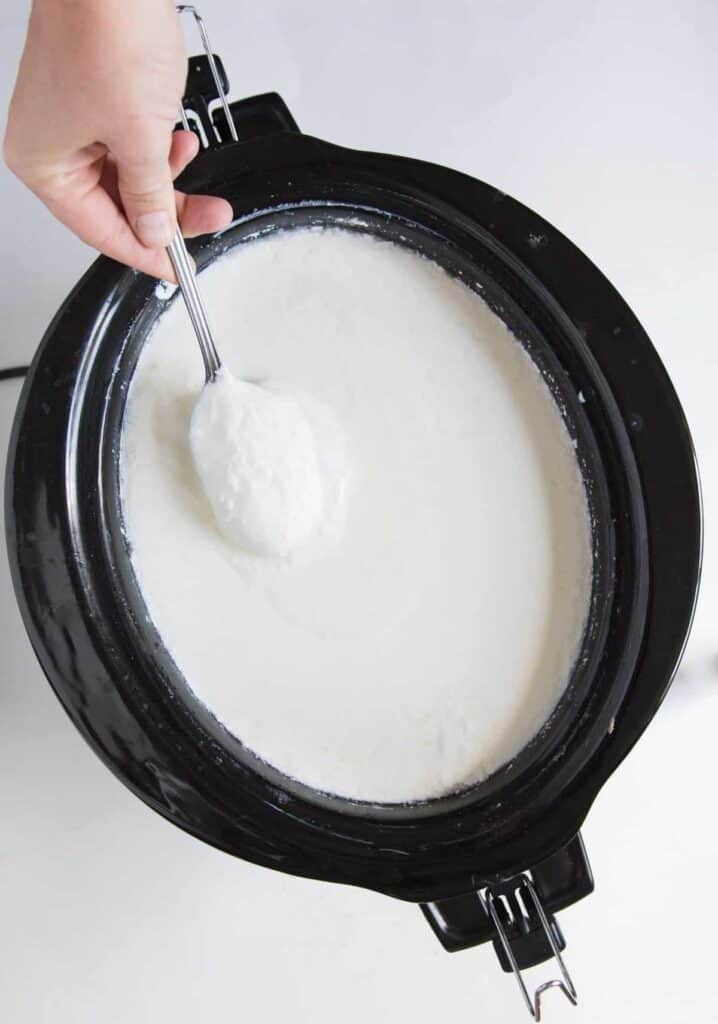
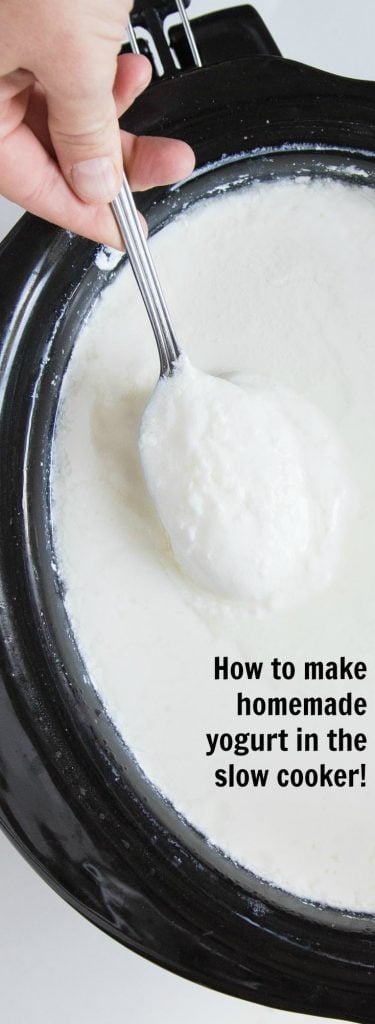
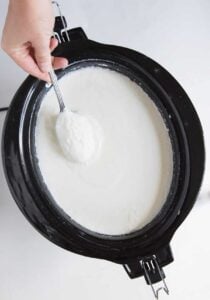
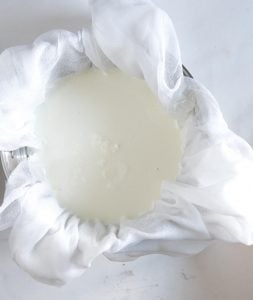

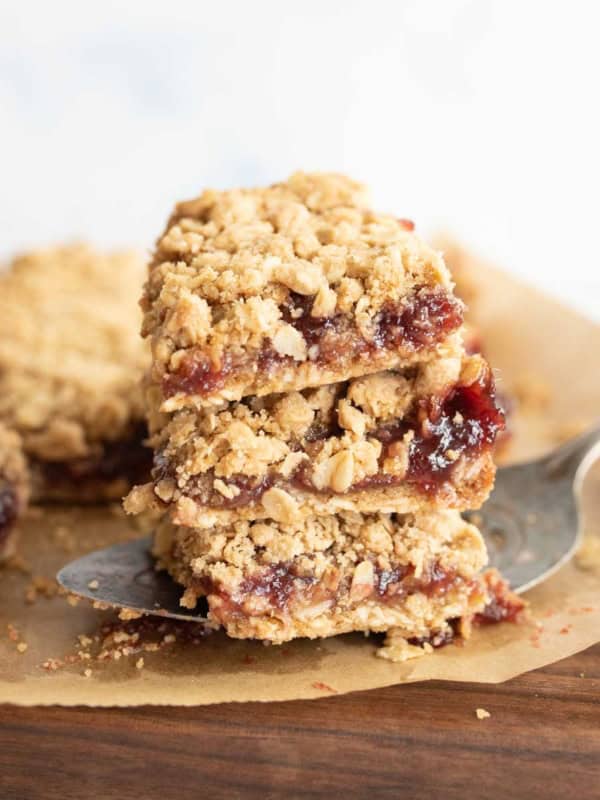
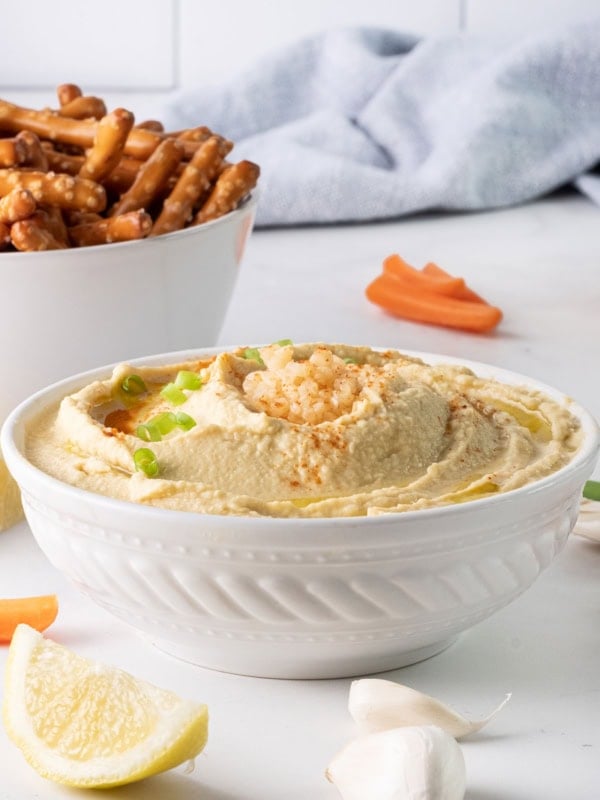
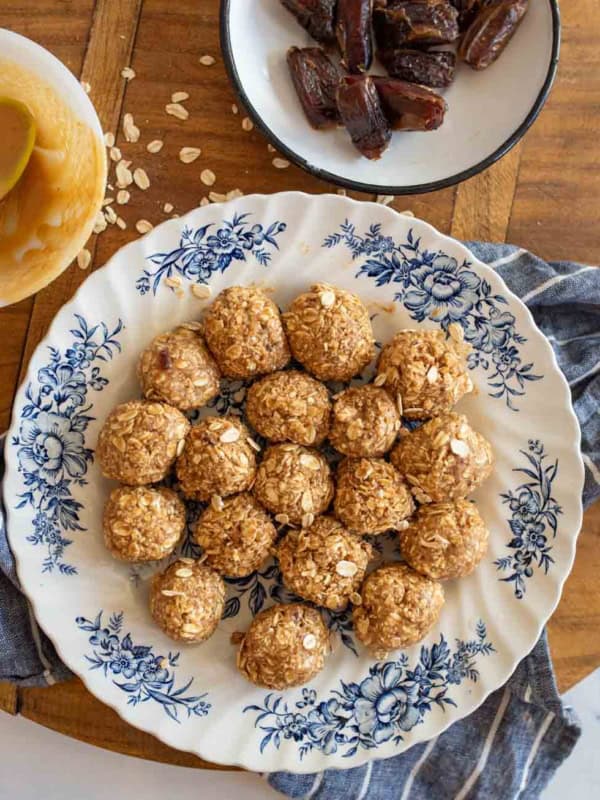






This recipe works great! I leave my crock pot in the oven with the light on overnight and find that keeps the perfect temperature without needing to do any wrapping.
I’ve been experimenting with adding cream and find that whipping cream (33%) doesnt seem work, probably because of the added stabilizers. My current “recipe” is 2 litres of 18% cream and approx 3 litres of homo milk (3.25%). Makes nice thick, creamy yogurt that only needs to strain for a couple hours.
Another tip, use a hand mixer before packaging away. I find the yogurt always comes out kind of lumpy, but if you give it a quick mix after straining, it stays extra smooth.
Hi, Melissa, I’ve made kefir many times. Adding cream made the kefir creamier and thicker. Would substituting some of the milk for cream do the same for yogurt. We already drink whole milk. I was thinking that adding a bit more fat would do the same as it did to the kefir.
Ohhh I don’t know but that seems like a sound theory to me! Let us know if you try it.
Hi, i have now tried this twice, i have followed the instructions exactly, and it hasn’t worked AT ALL. What am i doing wrong?? After 12h it is just the consistency of milk, it hasn’t thickened or turned into yogurt. It’s very frustrating, other recipes on line are very similar as i have read a few. Do you have any suggestions? Thanks
You are probably putting in your start while your milk is too hot and it’s killing the live culture or you’re using a yogurt starter that doesn’t have live cultures. Those would be my guesses.
Do you have a thermometer? My crockpot took around 4.5 hours on low to get to the initial 180°. Maybe your milk didn’t get hot enough?
I wonder if I could stick a big costco isulated fabric cooler bag around it instead of a blanket. Hmmmm….
YESSS that’s what my friend does!
Simple and easy, this took the nervousness out of making yogurt. My kids love it so much that I make two gallons a week. My friend’s also have me make theirs. I strain ours for about 9 hours., So thick and creamy!
Thank you for coming back and leaving a review, so helpful!
Trying to reduce my plastic consumption and I friend recommended I try making yogurt in an instant pot. I don’t have one so I looked to see if I could do it in a slow cooker. I am so happy I found this recipe! I used Lactose Free milk as my husband is lactose intolerant and it turned out perfectly.
Hurray for less plastic being consumed! I’m so glad that you said it worked with lactose free milk! Always helpful to hear what worked for other people. Thank you.
If you use ultra processed milk you don’t need to scald it. Ultra processed has already been scalded. You can start with cold milk.
I don’t typically use ultra processed milk and so I still scald it, but you are right, cold start is an option. And just so you know star reviews hurt or help google rankings and the user experience on websites like mine. If you didn’t try the recipe as written, please remove your 3 star rating as it looks poorly on a recipe you don’t have real experience with. Every little thing like this matters when it comes to running a website that is based on reviews.
You didn’t say whether I’m supposed to put the lid on while cooking, or not. I hope I was right in using the lid. Thanks for your recipe!
You do, I’ll note that, thank you.
Yes you did. My bad! Lol! ?
Why do you wrap the crock pot? Why wouldn’t I use the lid and keep in a warm draft free area?
The goal for the inoculation period is to keep the cultures in the warm milk warm so that they’ll turn your milk into yogurt. They work better when it warm and most of the time they rest/inoculate yogurt at 100 degrees F. give or take 5 degrees. If you can keep your crockpot that warm overnight, great. With the glass lid though, just sitting in my 72 degree house, it won’t stay that warm. The towels or a blanket just help to preserve the heat so that the live cultures can do their job.
I heat the milk to 180, then cool to luke warm, then add 1 cup to the culture; and put milk in crockpot that was turned on to warm; then add the culture mixture to the crockpot, then stir and turn off the crockpot and wrap a towel around for about 8 hours. It always turns out great. Today I forgot to turn off the crockpot and remembered after 3 hours. Any tips as to what I should do would be appreciated??
You’ll just want to the milk to go back down to luke warm, re-add your culture and move forward with your process. Odds are the culture you put in the first time will just just gotten too hot, there shouldn’t be any other issues outside of needing to add it again!